The art of pour painting
Catholic Schools Week 2022
(Right) Bishop Joseph Kopacz distributes the Eucharist to students at the annual Catholic Schools Week Mass. (Photos by Lindsey Bradley)
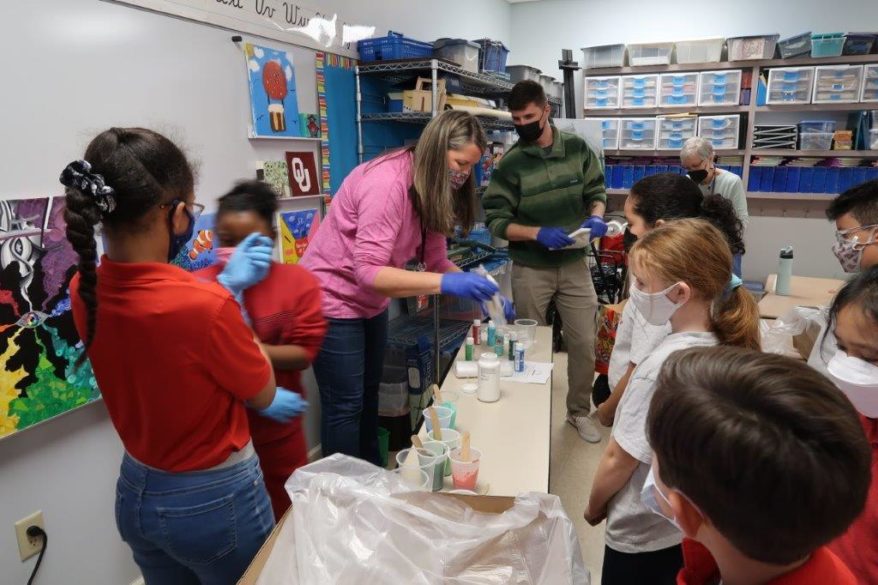
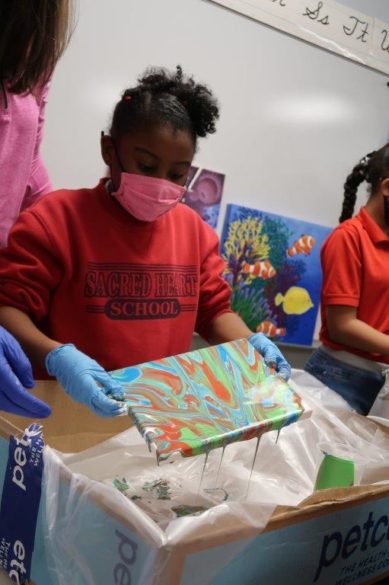
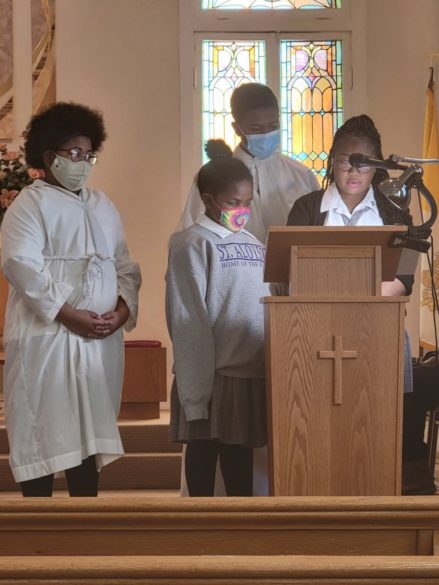
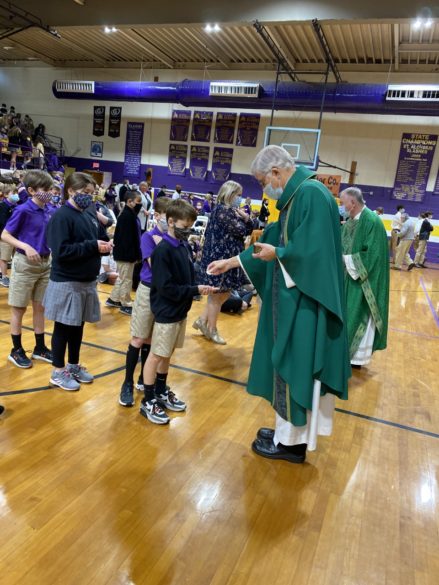
WASHINGTON, D.C. – U.S. Senator Cindy Hyde-Smith (R-Miss.) welcomed Mississippians in the nation’s capital to participate in the 2022 March for Life, greeting students and issuing an optimistic statement for the annual pro-life advocacy campaign.
On Thursday, Jan. 20, Hyde-Smith met with March for Life students from Cathedral School and St. Mary’s Basilica in Natchez. Under an “Equality Begins in the Womb” theme, Friday’s march comes on the heels of U.S. Supreme Court consideration of Mississippi’s abortion law, Dobbs v. Jackson Women’s Health Organization.
“With hope and prayer, thousands have marched each year for decades at the annual March for Life. Today, we march with greater hope and prayer for the Supreme Court to show grace to the unborn in the Dobbs case,” Hyde-Smith said.
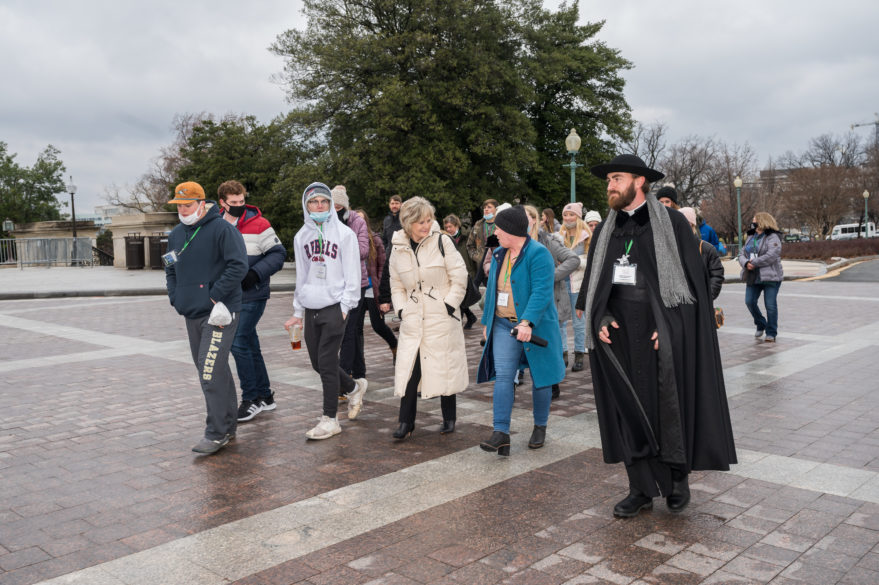
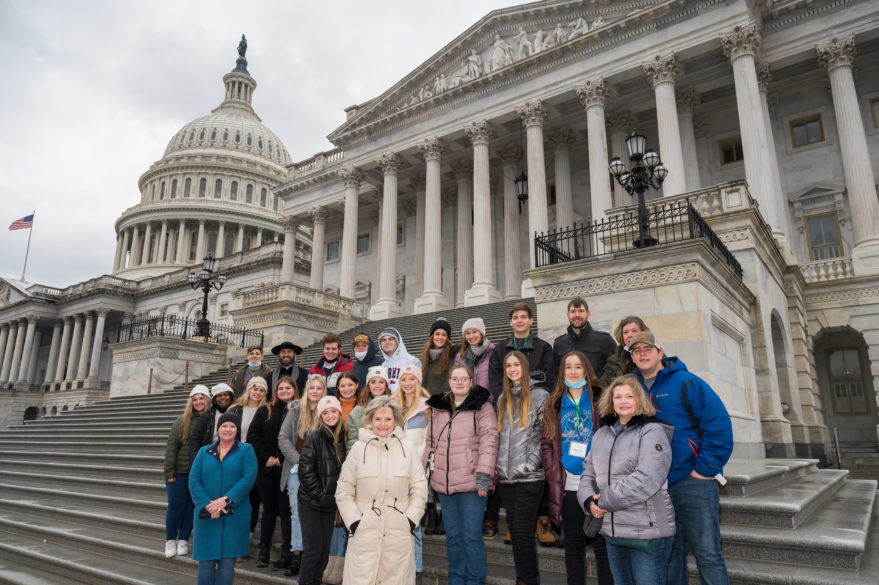
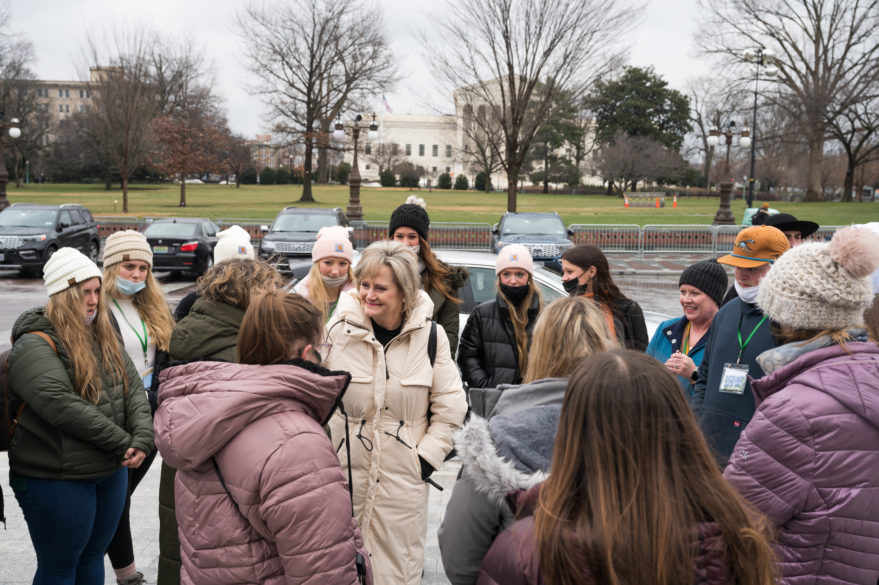
CANTON – Three young adults from Holy Child Jesus parish in Canton traveled to Miami to attend the “Journeying Together” youth leadership gathering that SEPI (Southeast Pastoral Institute) hosted Jan. 3-7. The program was centered on Pope Francis’ call to journey with the church towards synodality. Below are reflections of the young adults who attended the conference.
Victoria Alexander
I had the honor to be invited along with two parishioners from Holy Child Jesus Catholic Church of Canton to attend the SEPI journey in Miami. I learned so much from this journey through the five days that we were attending. We had various activities and experiences that we went through. We were given three spiritual words to reflect on the whole time we were there: community, beauty and mercy. We all experienced demonstrations of these words and the meanings behind them through the people we encountered or events we went to, and inspirational speakers that spoke to us about their journey on how they got where they are.
One of my favorite parts of the experience was the morning sunrise prayer we had on the beach early that morning and listening to Father read the word and Gospel was so beautiful during that moment. I had never experienced the Holy Spirit like I did that moment.
I am so thankful that I learned more about how beautiful and diverse our Catholic community and church are and what an impact young people can make in the world as young parishioners or missionaries in the church. We were so very blessed to attend this institute and I will never forget this as it has changed the way I view society and the church culture around the world.
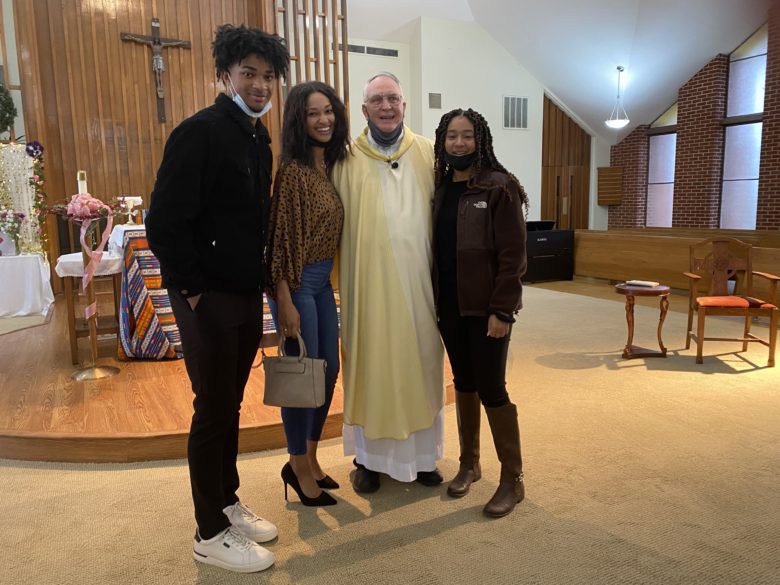
DeAsia Evans
My experience of going to Miami for the Youth Leadership gathering was very inspiring. I had the honor of going to the gathering with the help of SEPI and Catholic Extension. Youth leaders from different states all gathered to share their experiences and what they are doing to better their parish when it comes to the youth. While we were at the gathering, there were three words to remember during our time there. They were beauty, mercy and community.
Throughout my trip, I was able to experience all of those things. I saw beauty when we had sunrise prayer on the beach. We read the Gospel and said prayers as we watched the sun rise. There were even two seminarians there who shared their experience of being in seminary school and talking about how they were born in the Catholic faith. Mercy was shown through adoration when we spent a precious moment with the blessed sacrament and worshiped with The EPIC band. Lastly, community was shown when we came together and made hygiene bags, lunch and provided Christmas presents to those in need and for those who did not have a place to stay. Overall, it was such memorable experience that I will never forget, and it is something that I will do again.
Vincent Alexander
I am blessed and honored to have been chosen to attend the SEPI trip; I learned a lot and thoroughly enjoyed myself. I learned about the diversity in the Catholic community, as well as how things get more interesting within SEPI and other organizations.
One of the days I learned about how to connect with others, even those you might not expect to have a story. I learned about meeting and having a relationship with God, not just having a relationship, but also telling others to believe in him and trust in him. Making sure you have a relationship with him helps you to get where you need to go in life and to always have a relationship with him. Prioritize him.
I’ve also realized that God can change my church and help people in a variety of ways. I’d like to thank SEPI and everyone who helped make this possible for me, my church, and so many others. It was a true blessing and life-changing event.
From the Archives
By Mary Woodward
JACKSON – Somewhere around Jan. 26, our diocesan church family was wounded by an act of violence and evil against Immaculate Heart of Mary Church in Greenwood.
Most likely the work of someone high on crack or mentally ill, nonetheless the church was broken into and vandalized – the altar was overturned, and an antique five-foot statue of the Blessed Mother was heavily damaged. The Blessed Sacrament was removed from the tabernacle and placed on the church’s original altar. The antique baptismal font was damaged, and songbooks were strewn all over the pews. Fortunately, no spray paint was involved.
Throughout its early history, Greenwood Catholics were served from Water Valley and Lexington. The initial church structure was built in 1901 and in 1912, Father John Clerico, a young priest from Italy, was appointed the first resident pastor.
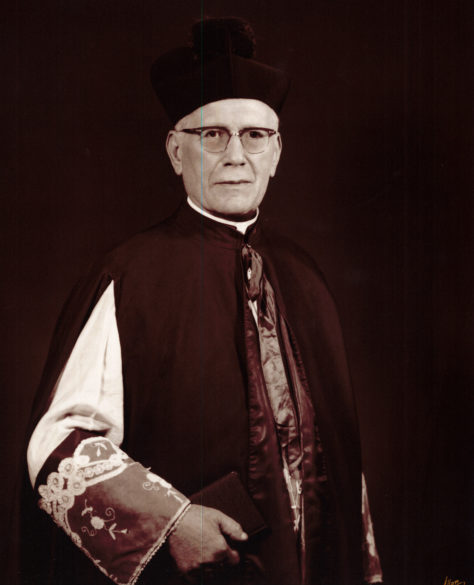
Father Clerico was ordained on June 9, 1906, in Genoa, Italy and came to the diocese in March 1907, where he began serving in Shelby at St. Mary Church and its missions. Father Clerico who became a monsignor in 1951, became known as the “Apostle to the Delta” because he ministered to much of the area from Greenwood for the next 52 years until 1964.
Msgr. Clerico considered the entire area, which included Greenwood, Shelby, Leland, Hollandale, Anguilla, Indianola and Belzoni, as his parish and he knew all the families of the region. Hence, he was given the title mentioned above. There is even a park named after him in Greenwood.
Many of the furnishings in IHM church were procured from Italy by the apostle. The 100-year-old statue which was heavily damaged was hand-painted and made of plaster. I have brought it to Jackson in the hopes that a local artist might be able to repair it.
The altar that was turned over was restored more than 10 years ago and was rededicated by Bishop Joseph Latino in a beautiful ceremony with the whole parish present. The parishioners were so excited to have another piece of their history becoming a part of their worship.
On Tuesday, Feb. 1, in a very moving and compassionate manner, Bishop Joseph Kopacz celebrated a Mass of Rededication for the parish and again anointed the altar and walls of the church returning it to sacredness from the evil that had been wrought upon it. There was a sense of resolve and relief among those present that what Msgr. Clerico had put in place was now made whole and healed once more.
It is hard to put into words the myriad of feelings experienced when evil attacks the church – even if it was a misguided or mentally ill person who perpetrated the acts. It was still evil. IHM is home to many, and the violence of this vandalism was heart-breaking.
In its infinite wisdom, Holy Mother Church has beautiful and deeply profound rituals that bring solace and a renewed sense of hope in the Lord by reclaiming the sacred from the profane. I consider it a blessing and a privilege to have been present for Bishop Latino’s dedication of the refurbished altar many years ago and for the rededication on Feb. 1, by Bishop Kopacz.
As Bishop Kopacz anointed the walls of the church with Chrism, I imagined Msgr. Clerico looking down lovingly upon all gathered in IHM from where he now celebrates endlessly at the table of the heavenly banquet.
The next morning as I was driving home from Greenwood in the rain with the broken statue of the Blessed Mother lying in the back of my car, I reflected on the liturgy the night before and the beautiful depth of faith shared at IHM. What an awe-inspiring numinous moment in the life of our universal church where the communion of saints joined with the people to restore a sacred space.
When it began to rain harder and I approached several 18-wheelers spraying blinding mist on my windshield, I felt fear rising in my heart as I engaged to pass them one at a time on the slick, ponding road. We have all been in this situation and it is no fun thinking about passing these mammoth vehicles in those conditions.
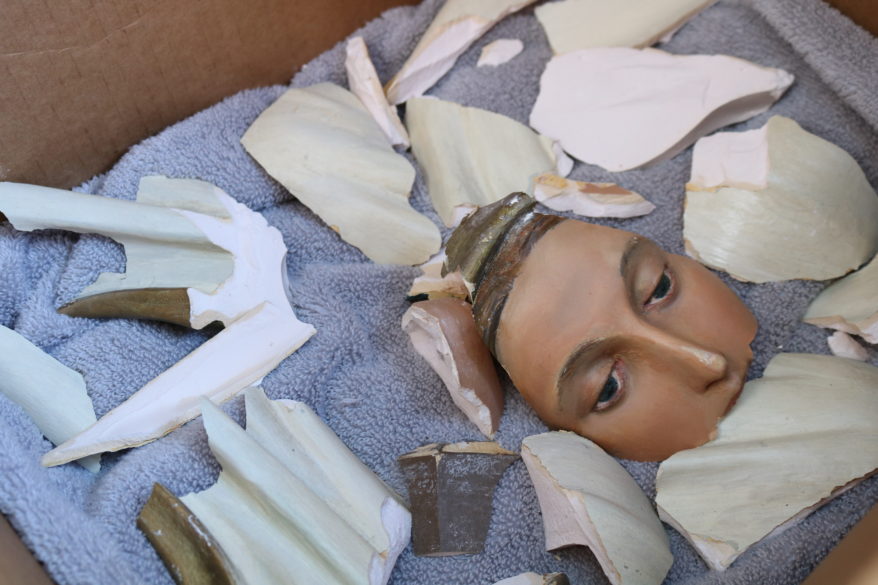
Suddenly, I remembered I had the Blessed Mother with me in the back seat. Even though she was battered and broken in many pieces, she came together and gave me the strength to put the pedal to the metal and get past those trucks.
Thank you, Blessed Mother! What a great church!
(Mary Woodward is Chancellor and Archivist for the Diocese of Jackson)
By Joanna Puddister King
GREENWOOD – The faith-filled parishioners of Immaculate Heart of Mary in Greenwood refuse to let a break-in that desecrated their parish triumph over their spirit, choosing to forgive and pray for the Holy Spirit to fill the hearts of the perpetrators.
On Wednesday, Jan. 26 choir members arriving for practice discovered their parish had been vandalized. Some parishioners described the scene as if a tornado had blown through it.
The altar was overturned, hymnals were ripped from their spines with papers strewn around the sanctuary, the pulpit was overturned, as well. A statue of Mary, over 100 years old, was pulled down and her face broken into pieces. Many other items were turned over and bent. Also broken was an antique baptismal font.
Most disturbing for some parishioners was that the tabernacle was breached and the Blessed Sacrament removed, it being place on the church’s original altar. But through grace, the hosts did not appear to be touched. Parishioners like Mary Jane Faulkner felt the situation could have been worse.
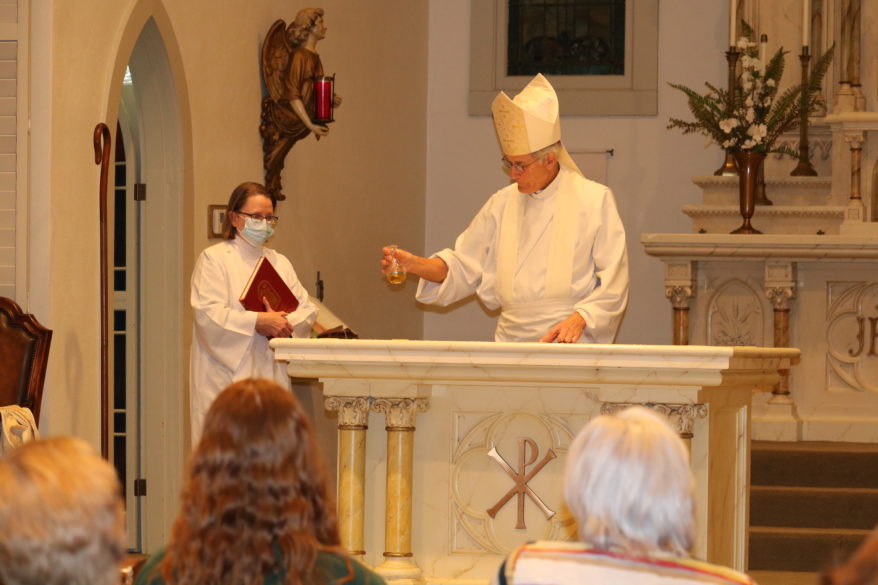
“They didn’t break the windows … they could have caught the church on fire, when they destroyed Mary next to the candles,” said Faulkner, who also works for the parish in communications. “So, we were blessed. It is amazing they didn’t demolish some of the other things they could have,” she concluded.
According to the USCCB at least 120 incidents, like the one occurring at Immaculate Heart, have occurred across 31 states and the District of Columbia since May 2020. Incidents include arson, statues beheaded, limbs cut, and smashed and painted, gravestones defaced with swastikas and anti-Catholic language and American flags next to them burned, and other destruction and vandalism. The conference even has a dedicated page on its website listing news stories that detail vandalism by month, since they began tracking incidents in May of 2020.
Pastor of Immaculate Heart, José de Jesús Sánchez expressed his “shock and grief” over the break-in over social media to the Catholic community, alerting them of the destruction in his parish. He was away at a family wedding in his home country of Mexico at the time of the incident.
People were hit hard by the images shared by Father Sánchez, including Bishop Joseph Kopacz, who said “at the same time, much prayer has been offered” from those across the diocese through the power of social media.
Amid all of the destruction at Immaculate Heart, Bishop Kopacz traveled to the parish on Wednesday, Feb. 1 to reconsecrate the church.
“We will reconsecrate this church once again to God in the Lord,” said Bishop Kopacz. “With great faith, hope and love with the desire to truly go forward, knowing that we have reconciled on a very deep level.”
Some in the parish, felt that the intent behind the destruction was to have parishioners lose their faith but the faith of the Immaculate Heart community is strong.
“We give thanks for this gift of faith, that can be assaulted, that can be hurt, but cannot be overcome in the Lord,” said Bishop Kopacz.
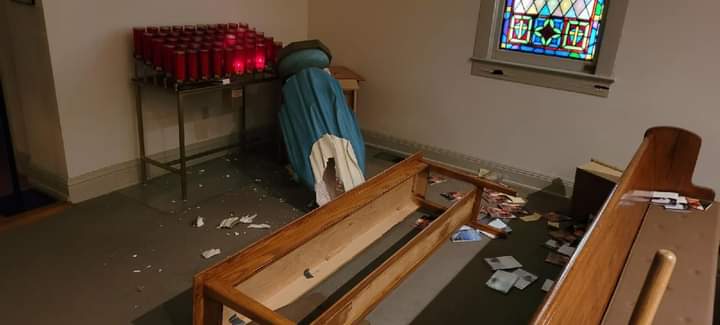
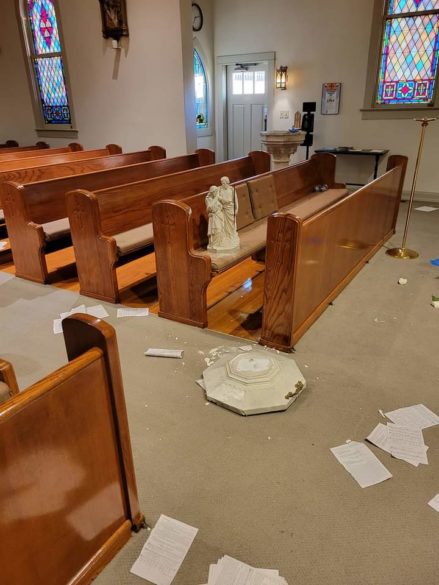
During his homily, Bishop Kopacz spoke of the destruction and evil that occurred within the walls of the church, mentioning the overturned pulpit and altar.
“The Word of God, another sacred part of who we are, was overturned, as if to say ‘We don’t want this Word proclaimed from this pulpit,’” said Bishop Kopacz, likening the destruction as malice. “That’s not just juvenile, ‘let’s just wreak a little havoc in this building.’”
Additionally, mentioned was the overturned altar and disturbed sacrament with Bishop Kopacz stating that “it was a deliberate blow to all that is sacred to us.”
As a part of the reconsecration of the church, Bishop Kopacz took great care in anointing the altar and with Chrism, in addition to the use of holy water to renew the baptismal promise of those present. “This seeks to make right, what has been wronged,” he said.

“Our altar represents Christ – it is Christ. … In the anointing, we are allowing the Lord to again come before us in a most powerful way to be our Good Shepherd and for us to know Him. For us to then enter deeply into the mystery of his life. … Heaven and earth are joined together each time we celebrate the Eucharist.”
After the Mass, parishioners like Faulkner expressed their gratitude and were moved by the beauty in the care of the reconsecration.
“I have never seen anything like it. It was extremely moving and beautiful,” said Faulkner.
Father Sánchez gave thanks for the experience of the reconsecration and was grateful for the feeling of hope, also witnessing a consecration of a church for the first time. “It was really beautiful and we know that we are not alone.”
“It is a new opportunity for all of us in the Body of Christ … and we can say to the enemy that if Christ is with us, who is against us.”
Parish coordinator and director of religious education, Emelia Joseph, who has worked tirelessly getting new keys, meeting with police officers and more in the wake of the break-in, is thankful for the support of the Greenwood community and the people of the diocese.
“We know through the grace of God and all the people who have contacted us, with prayer and their support, that we are not only going to rally through this, but we are going to be stronger than ever.”
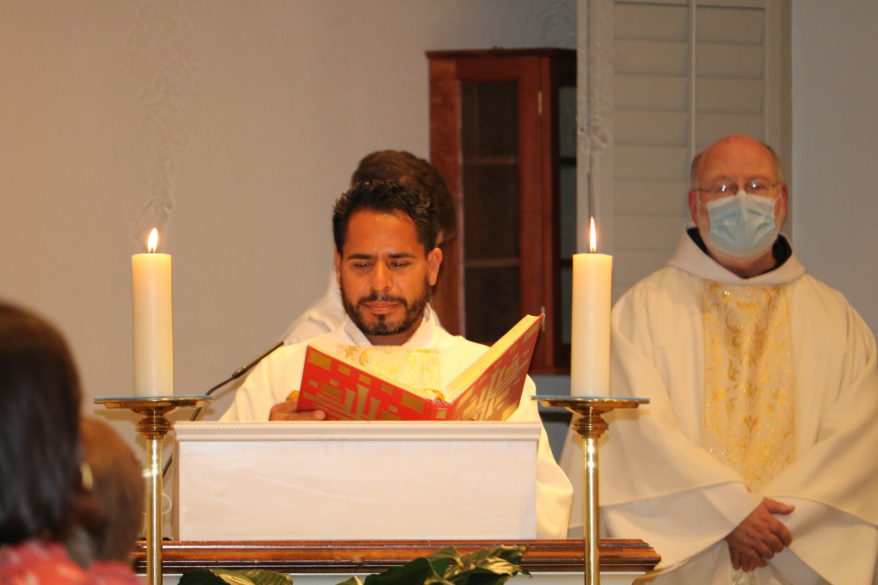
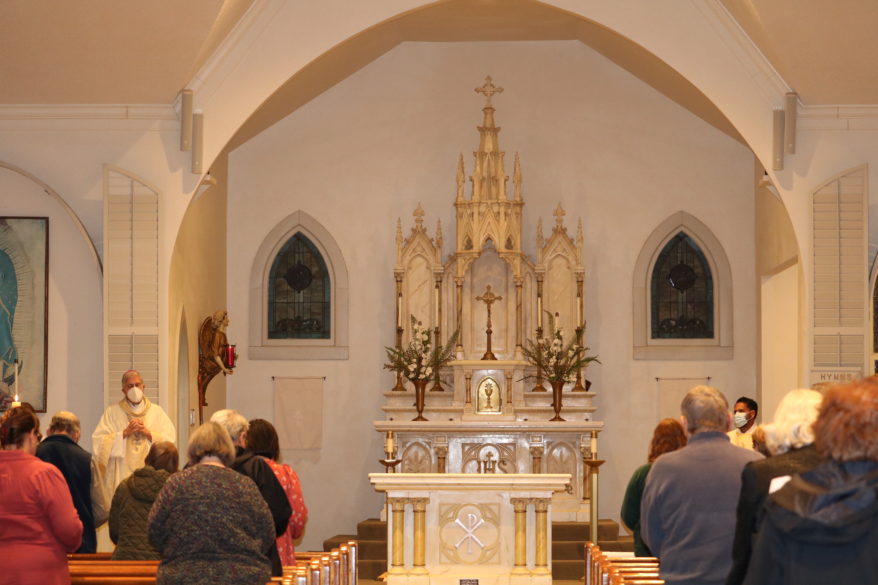
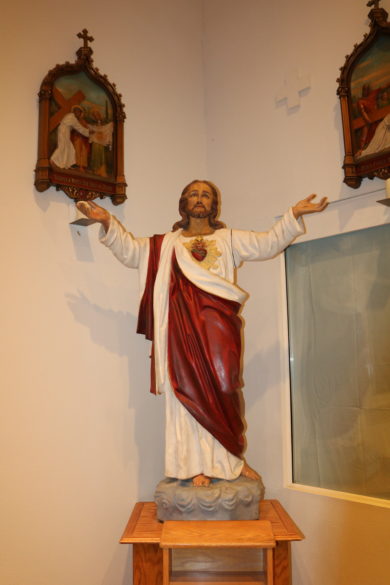
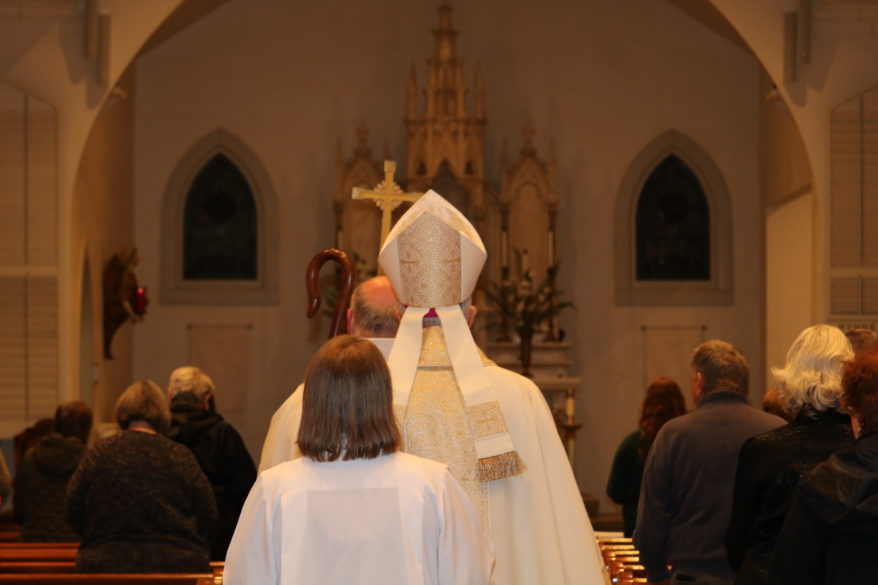
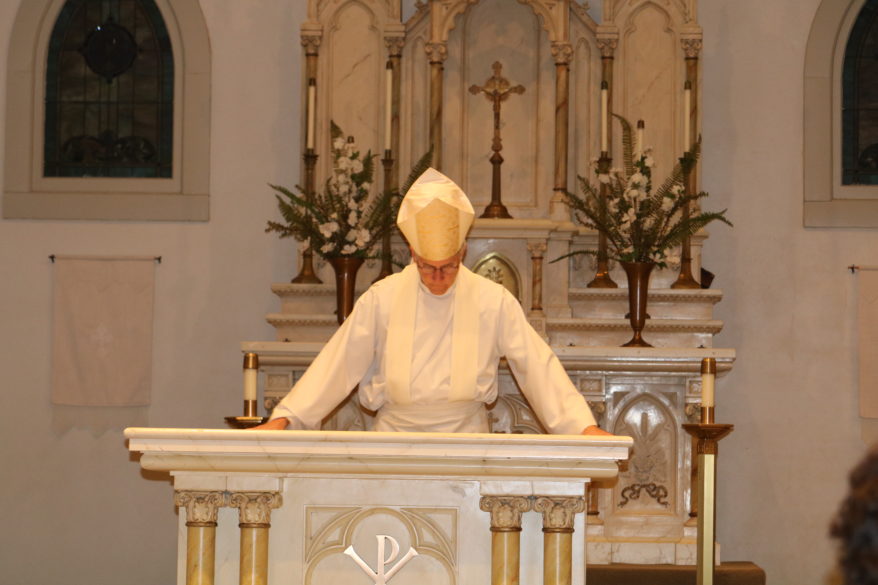
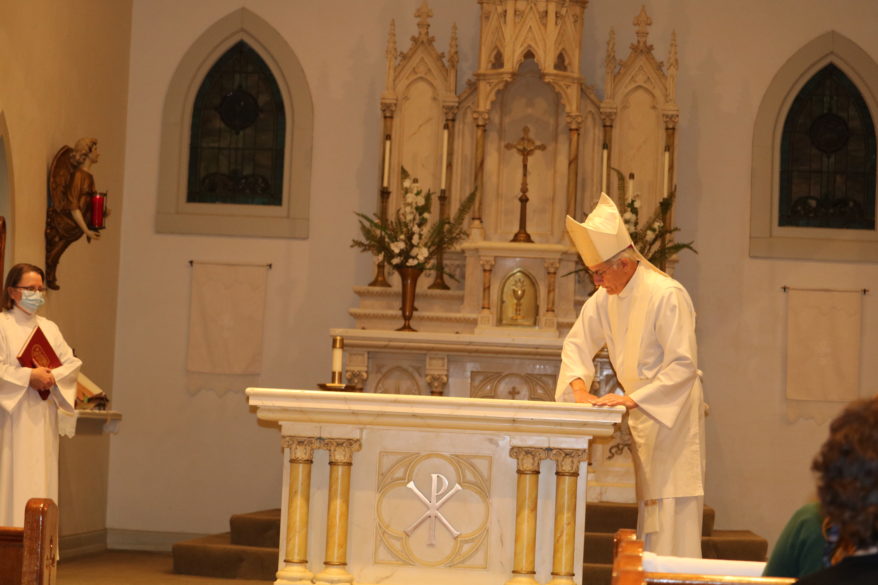
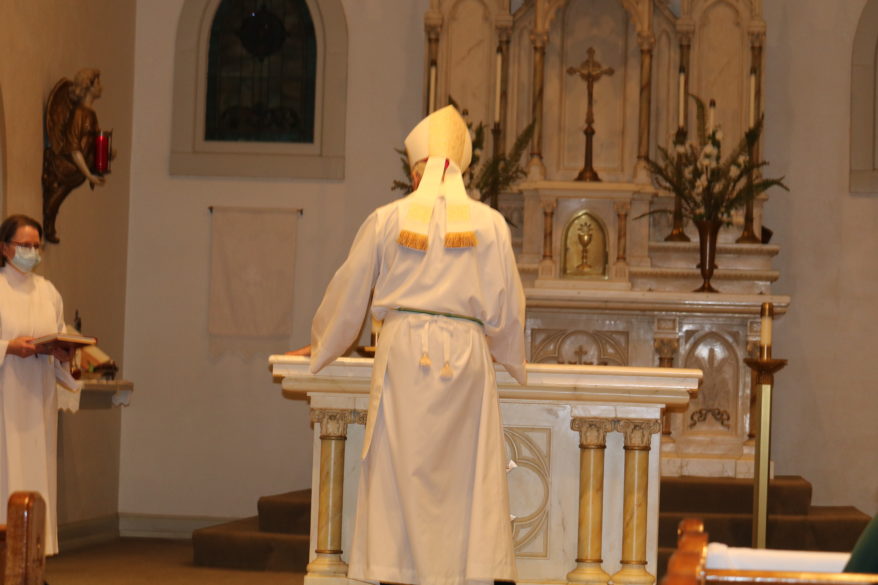
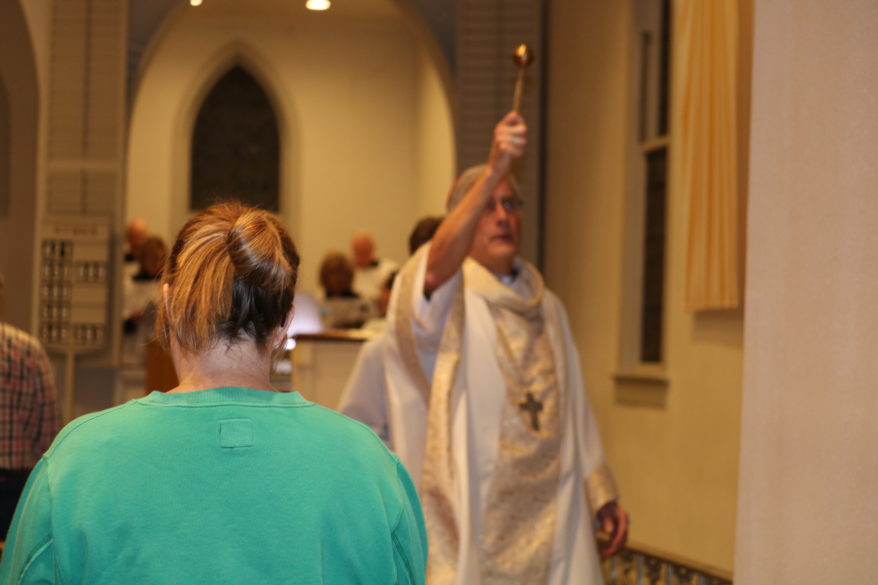
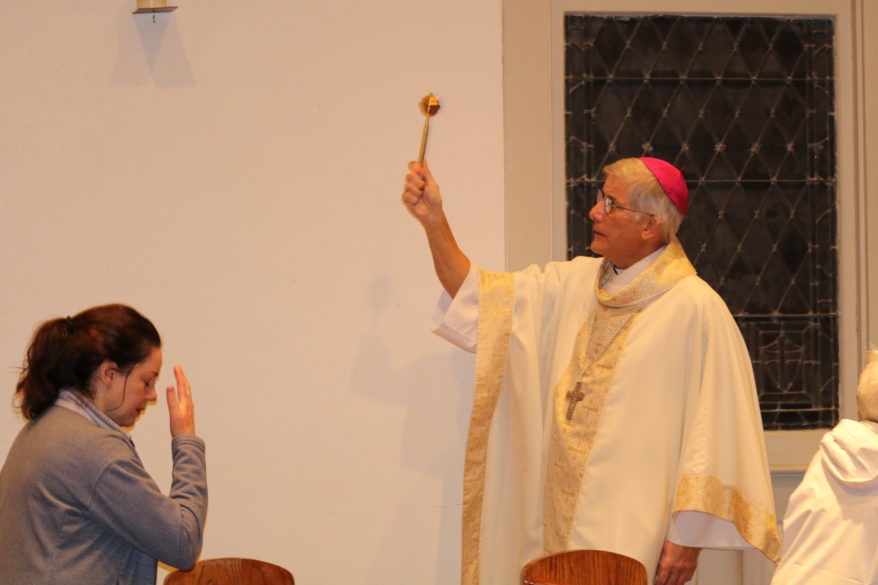
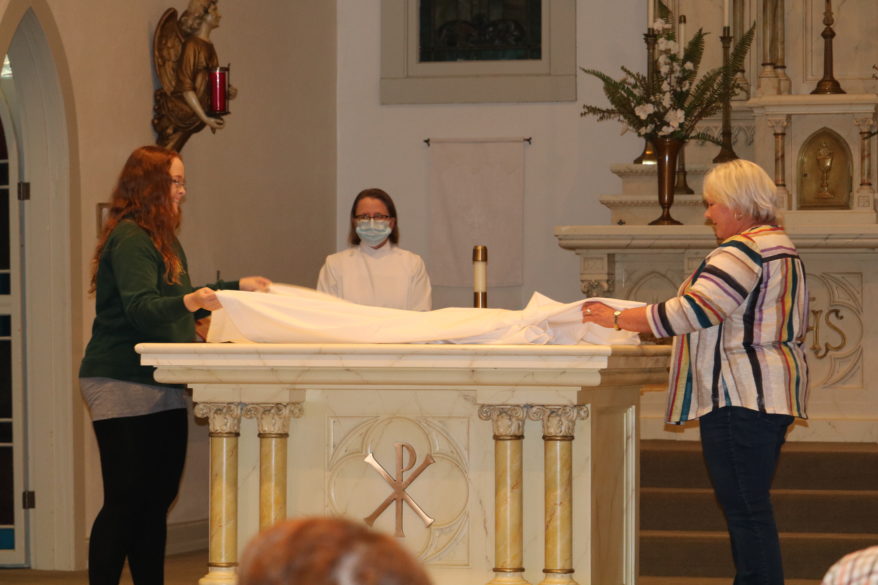
By Bishop Joseph R. Kopacz, D.D.
The fire that nearly destroyed Notre Dame Cathedral in Paris seems like a distant memory. In fact, it occurred less than three years ago on April 15, 2019, but we would agree that it has faded from the public’s awareness. This is due in large part to the pandemic which has been burning non-stop for the past two years with its accompanying social and economic upheavals. Yet, the labor of love to restore this world-renowned icon has not lost momentum, although it progresses out of the public view.
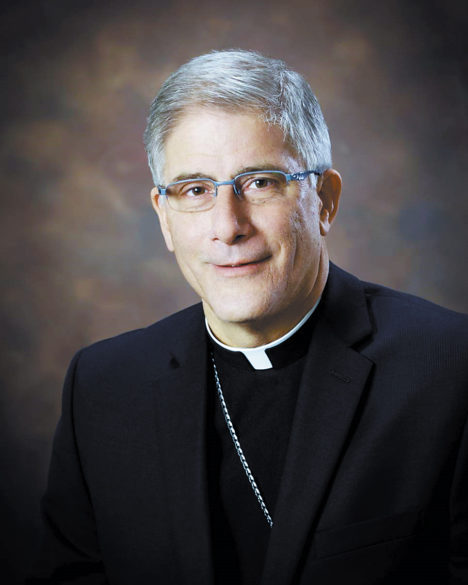
The massive undertaking for the complete restoration of Our Lady’s house of worship is slated for 2024. This anticipated time frame is nothing short of a miracle, and it brings to light the commitment of the French nation, believer and non-believer alike, to restore this priceless national treasure.
Although the practice of the Catholic faith in France and in much of Europe is struggling to emerge out of the ashes of disregard, the flow of pilgrims and tourists to this 800-year-old Medieval masterpiece is robust. Neither the church nor the state wants to face the future in the absence of this transcendent icon of faith and culture. Fortunately, the statues of the 12 Apostles got out of town four days before the fire for their own scheduled restoration. They are providing a good foundation upon which to rebuild.
On that note, Pope Francis, the successor of St. Peter, in collaboration with bishops throughout the world, the successors of the Apostles, is calling for a grass roots effort among the faithful to embrace a process of renewal and restoration in the church through the Synod on Synodality. In recent times, many forces have ravaged the church like a destructive fire and scattered the faithful, including the pandemic, scandals, divisions and a general hostility toward all things religious. Pope Francis hopes that the Synodal process of communion, participation and mission can be a counterweight to the pressures that are tearing at the fabric of the church’s unity and integrity.
The spirit of the Synod has been evident in the major works of Pope Francis since the outset of his papacy. From the Joy of the Gospel to his most recent works, Fratelli Tutti and Let us Dream as the pandemic continued to engulf the world, his heartfelt vision is that fraternity will rise to the level of liberty and equality, creating an authentic solidarity within the church and among the nations of our world in the face of glaring disparity. His hope is that through a world-wide synodal process the Holy Spirit can breathe new life into the church, and in turn the church can be a witness to the world of the good fruit of dialogue, respectful listening and discernment on behalf of the common good.
Experience informs us that this Synodal process of encounter and accompaniment cannot succeed apart from prayer and the Word of God. Otherwise, polarization and politicization will derail the best of intentions, and the divisions within the church and all around her will spoil the moment. Rather, arising from our fundamental identity as the Body of Christ, we have developed a process in the Diocese of Jackson of communion, participation and mission that appeals to our better angels.
Under the gaze of the Holy Spirit seeks to kindle the voice of the faithful in order to better read the signs of the times with the mind and heart of Jesus Christ. We have developed the process in order to maximize the level of participation in our parishes and schools, and in a whole host of organizations and extra-parochial ministries. We hope that there will be much to digest from which will emerge our diocesan 10-page synthesis that eventually will be a stream flowing into a mighty river that will flow all the way to Rome.
If believers and non-believers in admirable fraternity can commit themselves to the full restoration of Notre Dame, a transcendent icon of faith and culture, then it is our hope that the Holy Spirit will guide the people of God in the Diocese of Jackson and throughout the world in the restoration of the church which is the icon and sacrament of salvation.
Mary, Mother of the Church, pray for us!
By Junno Arocho
VATICAN CITY (CNS) – The Holy Spirit, and not the need for recognition, must be the primary motivation in one’s religious life, Pope Francis told consecrated men and women.
“Sometimes, even behind the appearance of good works, the canker of narcissism, or the need to stand out, can be concealed. In other cases, even as we go about doing many things, our religious communities can appear moved more by mechanical repetition – acting out of habit, just to keep busy – than by enthusiastic openness to the Holy Spirit,” the pope said in his homily Feb. 2.
“Let us today examine our interior motivations and discern our spiritual movements, so that the renewal of consecrated life may come about, first and foremost, from there,” he said.
Hundreds of men and women belonging to religious orders attended the Mass for the celebration of Candlemas – the feast of the Presentation of the Lord – which also marks the Vatican celebration of the World Day for Consecrated Life.
During the Mass, Pope Francis exchanged consecrated bread and wine with Armenian Catholic Patriarch Raphaël Pierre XXI Minassian, who was elected in September, thus sealing their ecclesial communion.
In September, after the election, the pope granted the Armenian patriarch’s request for unity, which is sealed with the gesture of partaking of the Eucharist together. The Armenian Patriarchate, based in Beirut, is one of 22 Eastern Catholic Churches that is in full unity with the Holy See and the Catholic Church.
The Mass began with the traditional blessing of candles. Led by several candle-bearing acolytes, Pope Francis processed toward the Altar of the Chair in a darkened St. Peter’s Basilica, faintly lit by the congregation’s candles as the choir sang, “O radiant light, eternal splendor of the father, Christ the Lord immortal.”
Pope Francis blessed the candles and prayed that the Lord would guide all men and women “on the path of good” toward his Son, “the light that has no end.”
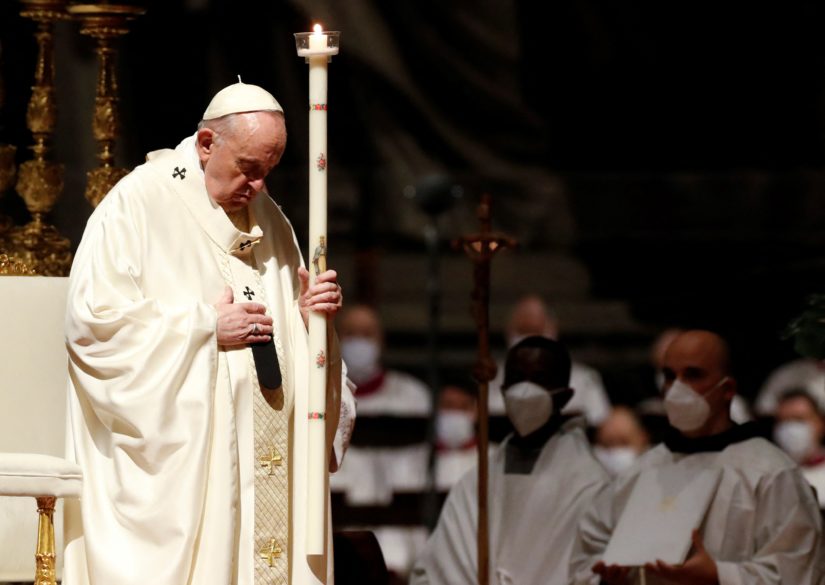
In his homily, the pope reflected on the Gospel reading from St. Luke, in which the young Mary and Joseph, along with baby Jesus, meet the elderly Simeon and Anna, who “await in the Temple the fulfilment of the promise that God made to his people: the coming of the Messiah.”
Just like the elderly Simeon recognizes the Messiah “in the guise of a poor little baby,” religious men and women are called to be “moved by the Spirit” rather than success or prestige in their congregations.
“The spirit moves us to see God in the littleness and vulnerability of a baby, yet we at times risk seeing our consecration only in terms of results, goals and success: We look for influence, for visibility, for numbers,” the pope said. “The Spirit, on the other hand, asks for none of this. He wants us to cultivate daily fidelity and to be attentive to the little things entrusted to our care.”
Secondly, Simeon’s example of seeing and recognizing Christ is a testament to the “great miracle of faith” that “opens eyes, transforms gazes and changes perspectives.”
“Let us open our eyes: The spirit is inviting us amid our crises, decreasing numbers and diminishing forces, to renew our lives and our communities. Let us look at Simeon and Anna: Although they were advanced in years, they did not spend their days mourning a past that never comes back, but instead embraced the future opening up before them,” he said.
Por Obispo Joseph R. Kopacz, D.D.
El incendio que casi destruye la catedral de Nuestra Señora de París (Notre Dame) parece un recuerdo lejano. De hecho, ocurrió hace menos de tres años, el 15 de abril de 2019, pero estaríamos de acuerdo en que el hecho se ha desvanecido de la conciencia del público. Esto se debe en gran parte a la pandemia, que ha estado ardiendo sin parar durante los dos últimos años, con todos los trastornos sociales y económicos que la acompañan. Sin embargo, el trabajo de amor para restaurar este ícono de renombre mundial no ha perdido impulso, aunque la restauración progrese fuera de la vista del público.

La masiva empresa para la completa restauración de la casa de culto de Nuestra Señora está programada para 2024. Este marco de tiempo anticipado es nada menos que un milagro, y saca a la luz el compromiso de la nación francesa, creyentes y no creyentes por igual, para restaurar este tesoro nacional de valor incalculable.
Aunque la práctica de la fe católica en Francia y en gran parte de Europa está luchando por emerger de las cenizas del desprecio, el flujo de peregrinos y turistas a esta medieval obra maestra de 800 años es muy fuerte. Ni la iglesia ni el estado quieren enfrentar el futuro sin este ícono trascendente de fe y cultura. Afortunadamente, las estatuas de los 12 Apóstoles salieron de la ciudad, cuatro días antes del incendio, para su propia restauración programada y las mismas están proporcionando una buena base sobre la cual reconstruir.
En ese sentido, el Papa Francisco, el sucesor de San Pedro, en colaboración con los obispos de todo el mundo, los sucesores de los Apóstoles, está llamando a un esfuerzo de base entre los fieles para abrazar un proceso de renovación y restauración en la iglesia a través del Sínodo sobre la Sinodalidad. En los últimos tiempos, muchas fuerzas han devastado la iglesia como un fuego destructivo y dispersado a los fieles, incluida la pandemia, los escándalos, las divisiones y la hostilidad general hacia todo lo religioso. El Papa Francisco espera que el proceso sinodal de comunión, participación y misión pueda ser un contrapeso a las presiones que están desgarrando el tejido de la unidad e integridad de la iglesia.
El espíritu del Sínodo ha sido evidente en las principales obras del Papa Francisco desde el comienzo de su papado. Desde la Alegría del Evangelio hasta sus obras más recientes, Fratelli Tutti y Soñemos, mientras la pandemia continuaba envolviendo al mundo, su visión sincera es que la fraternidad se elevará al nivel de libertad e igualdad, creando una auténtica solidaridad dentro de la iglesia y entre las naciones de nuestro mundo frente a la flagrante disparidad. Su esperanza es que, a través de un proceso sinodal mundial, el Espíritu Santo pueda dar nueva vida a la iglesia y, a su vez, la iglesia pueda ser testigo al mundo del buen fruto del diálogo, la escucha respetuosa y el discernimiento en nombre del bien común.
La experiencia nos enseña que este proceso sinodal de encuentro y acompañamiento no puede tener éxito sin la oración y la Palabra de Dios. De lo contrario, la polarización y la politización harán descarrilar las mejores intenciones y las divisiones dentro y alrededor de la iglesia estropearán el momento. Más bien, surgiendo de nuestra identidad fundamental como el Cuerpo de Cristo, en la Diócesis de Jackson hemos desarrollado un proceso de comunión, participación y misión que apela a nuestros mejores ángeles.
Bajo la mirada del Espíritu Santo buscamos encender la voz de los fieles para leer mejor, con la mente y el corazón de Jesucristo, los signos de los tiempos. Hemos desarrollado el proceso para maximizar el nivel de participación en nuestras parroquias, escuelas y en una gran cantidad de organizaciones y ministerios extra parroquiales. Esperamos que haya mucho que digerir, de lo cual surgirá nuestra síntesis diocesana de 10 páginas que, eventualmente, será una corriente que desemboque en un río caudaloso que fluirá hasta Roma.
Si creyentes y no creyentes, en una fraternidad admirable, pueden comprometerse con la restauración completa de Notre Dame, un ícono trascendente de fe y cultura, entonces esperamos que el Espíritu Santo guíe al pueblo de Dios en la Diócesis de Jackson y en todo el mundo en la restauración de la iglesia que es icono y sacramento de salvación.
María, Madre de la Iglesia, ¡Ruega por nosotros!
I apologize for my absence in the last issue, but as our editor shared I was on my annual silent retreat. This is a nice segue to exploring the second dimension of priestly formation that a man is responsible for nurturing and developing during his time in the seminary: Spiritual.
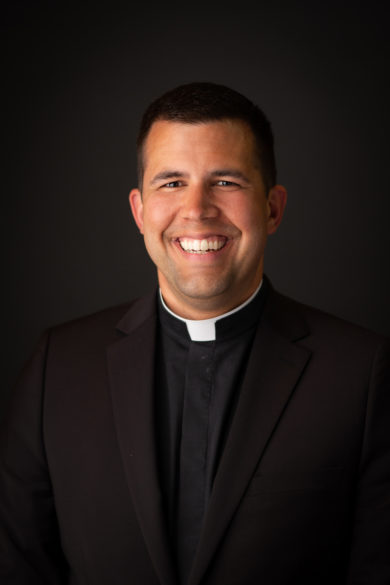
The Spiritual Dimension of priestly formation is cultivated through building a consistent habit of silent prayer. It is so important that a man is able to be in regular conversation with the Lord and to allow the love of the Father deep into his heart and soul. This will help him to persevere during long years of priestly formation, and it will also sustain him in ministry once he is ordained. The seminary plays an important role in providing opportunity for men to pray each day. Every morning at both of our seminaries there is time for exposition of the Blessed Sacrament before the regularly scheduled morning prayers with the community. This time of silent encounter with Jesus is one of the best ways to stay connected with the Lord. But outside the structure of the seminary a man must be dedicated to renewing his relationship with God whenever it begins to wane.
Just like there are times when couples need a retreat, a weekend, a family vacation to recharge, so too a priest needs to be attentive to making sure he is taking time in silence and deep prayer to be with the Lord. The seminary can give men the tools to do this and they can mandate times in the schedule to facilitate prayer, but eventually the seminarian must be responsible for taking that time with the Lord on his own. It can be very tempting to see silent prayer time as a “waste,” even as a priest. After all, there are many different responsibilities that need tending to for all of us, and yet if a priest does not provide that good example for his people, his parishioners will likely begin to believe that prayer is optional for them as well. And if a priest does not take time to connect with the Lord who loves him and who has called him to this ministry, it can be easy to forget that he was called at all.
One way that we seek to cultivate a deep love for prayer in our seminarians is a summer experience at the “Institute for Priestly Formation.” IPF hosts 175 seminarians each summer at Creighton University in Omaha, Nebraska. During the eight-week program, The seminarians are taught the Spiritual Exercises of St. Ignatius and go to various seminars helping them understand spiritual movements in a deeper, more relational way rooted in the truth that at baptism we are made beloved sons and daughters of our Heavenly Father in Christ. Participants also have many opportunities to pray together in a way that builds up bonds of friendship and support that can help them throughout their time in seminary and into priesthood. Some of my best friends were men who attended the IPF summer program when I was there in 2015, and I know that I can seek their support when I need to deepen my prayer life and be held accountable for my attention to the Lord in silence and prayer.
My annual retreat was filled with graces from the Lord for which I am very grateful. I encourage all of you to build in times of silent prayer each day, and I pray that our future priests will help to guide you in your own relationship as beloved sons and daughters of the Father.
IN EXILE
By Father Ron Rolheiser, OMI
In the world of the arts, they make a distinction between persons who create an artifact, an artist, a sculptor or a novelist, and persons who write about artists and their works. We have novelists and literary critics, artists and art critics; and both are important. Critics keep art and literature from bad form, sentimentality, vulgarity and kitsch; but it’s the artists and novelists who produce the substance; without them critical assessment has no function.
For example, the book The Diary of Anne Frank is a masterpiece. Countless books and articles have been written about it, but these are not the masterpiece, the substance, the artifact that so deeply touched the soul of millions. They are commentaries about the artifact. Of course, sometimes a person can be both, a novelist and a literary critic, an artist, and an art critic; still the distinction holds. These are separate crafts and separate disciplines.
That same distinction holds true within the area of theology and spirituality, though it is often not recognized. Some people write theology and others write about theology, just as some people write spirituality and others write about spirituality. Right now, I’m writing about theology and spirituality rather than actually doing theology or spirituality.
Perhaps an example can help. Henri Nouwen was one of the most popular spiritual writers in the past seventy years. Nouwen wrote spirituality; he never wrote about it, he wrote it. He was not a critic; he wrote spiritual texts. Many people, including myself, have written about Nouwen, about his life, his works, and why he influenced so many people. Strictly speaking, that’s writing about spirituality as opposed to writing spirituality as Nouwen did. Truth be told, we don’t have an abundance of spiritual writers today the caliber of Nouwen. What we do have, particularly at an academic level, is an abundance of critical writings about spirituality.
I offered the example of a contemporary spirituality writer, Henri Nouwen, but the distinction is perhaps even clearer when we look at classical spiritual writers. We have in fact created a certain “canon” of spirituality writers whom we deem as classics: the Desert Fathers and Mothers, the Pseudo-Dionysius, Julian of Norwich, Nicholas of Cusa, Francis of Assisi, Dominic, Ignatius, John of the Cross, Theresa of Avila, Francis de Sales, Vincent de Paul and Therese of Lisieux, among others. None of these wrote works of criticism in se, they wrote spirituality. Countless books have been written about each of them, critically assessing their works. As valuable as these books are, they are in the end not spirituality books, but books about spirituality.
The same is true for theology. We have infinitely more books written about theology than we have books that are actual theology. The word “theology” comes from two Greek words, Theos (God) and logos (word). Hence, in essence, theology is “words about God.” Most theology books and courses on theology contain some “words about God,” but these are generally dwarfed by “words about words about God.”
This is not a criticism, but a clarification. I have taught and written in the area of theology and spirituality for nearly fifty years and am blissfully unaware of this distinction most of the time, mainly because we need both and the two simply flow in and out of each other. However, there is a point where it becomes important not to confuse or conflate the critical assessment of an artifact with the artifact itself, and in our case to recognize that writing about theology and spirituality is not the same thing as actually doing theology and doing spirituality. Why? Why highlight this distinction?
Because we need the artist and the critic to speak to different places inside of us and we need to recognize (explicitly at times) where we need to be fed or guided. The artist speaks to the soul with one kind of intent, namely, to inspire, to inflame, to deepen, to bring new insight and to move us affectively. The critic speaks with a different intent: to guide, to keep us balanced, sane, robust, clear-headed, and within the bounds of decency, community, proper aesthetics, and orthodoxy. Both are important. One saves the other from unbridled sentimentality and the other saves the other from simply being an empty exercise. In a vast over-simplification, we might put it this way. Critics define the rules of the game and hold the players to the rule; but art, theology and spirituality are the game. Games need to be refereed or they quickly degenerate.
In our churches today there is often a tension between those who are trying to create new insight, generate new enthusiasm, and speak more affectively to the soul; and those who are guarding the castles of academia, orthodoxy, liturgy and good taste. Academic theology is often in tension with devotional life; liturgists are often in tension with pastors, and popular spiritual writers are often in tension with critics. One or the other may irritate us, but each is ultimately a friend.
(Oblate Father Ron Rolheiser is a theologian, teacher and award-winning author. He can be contacted through his website www.ronrolheiser.com.)